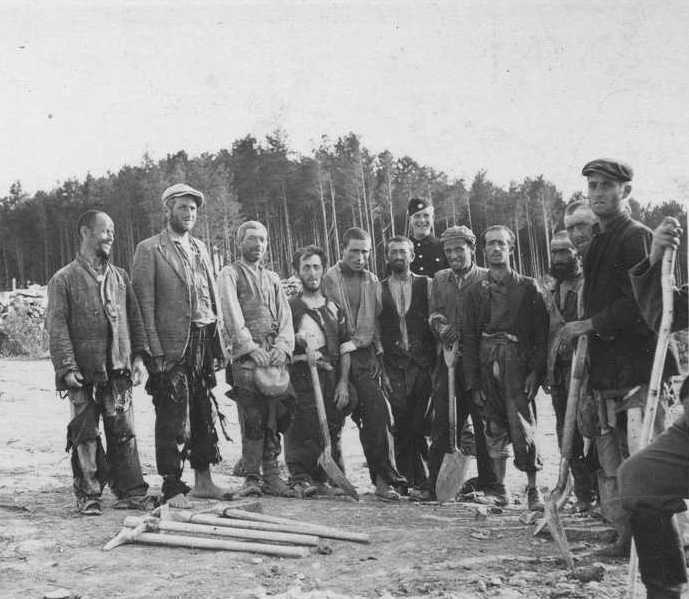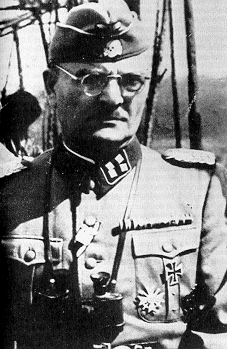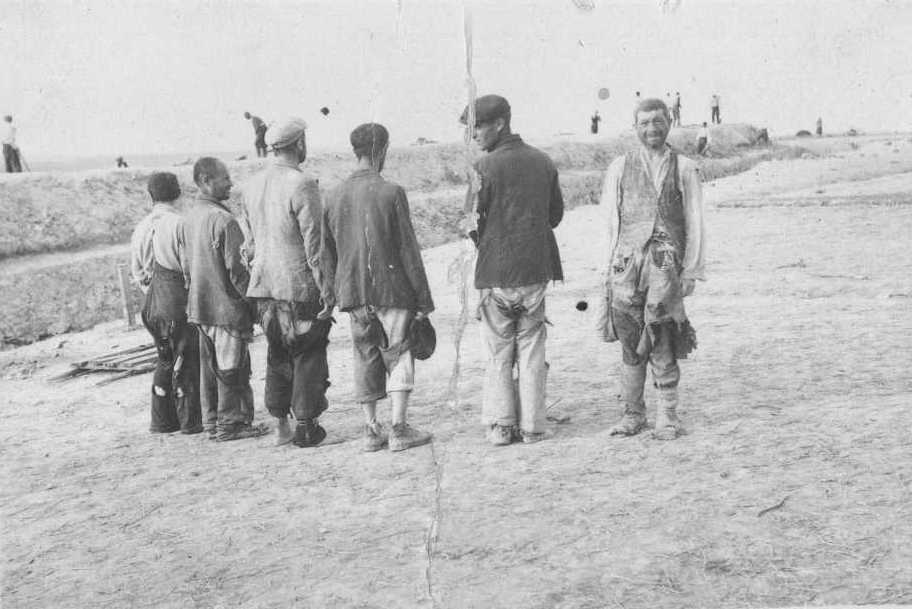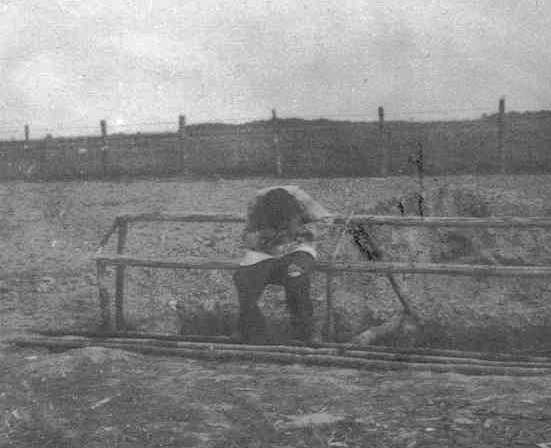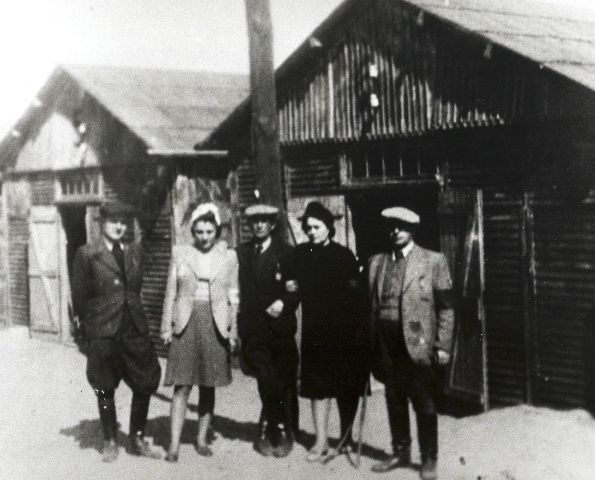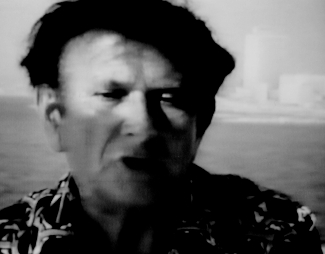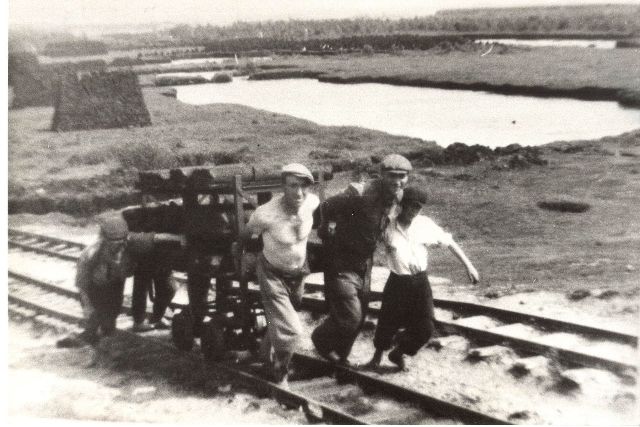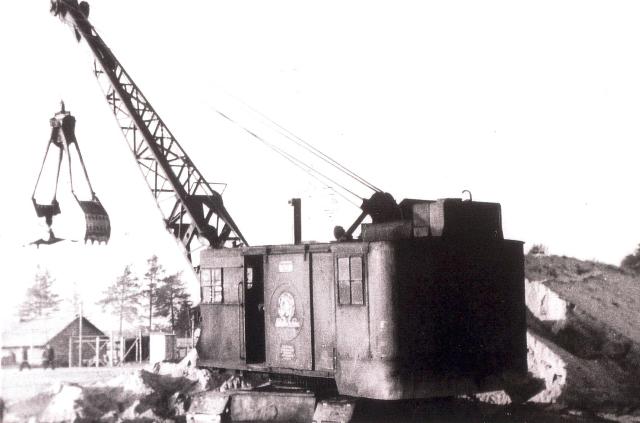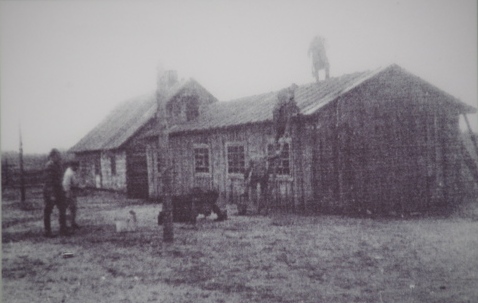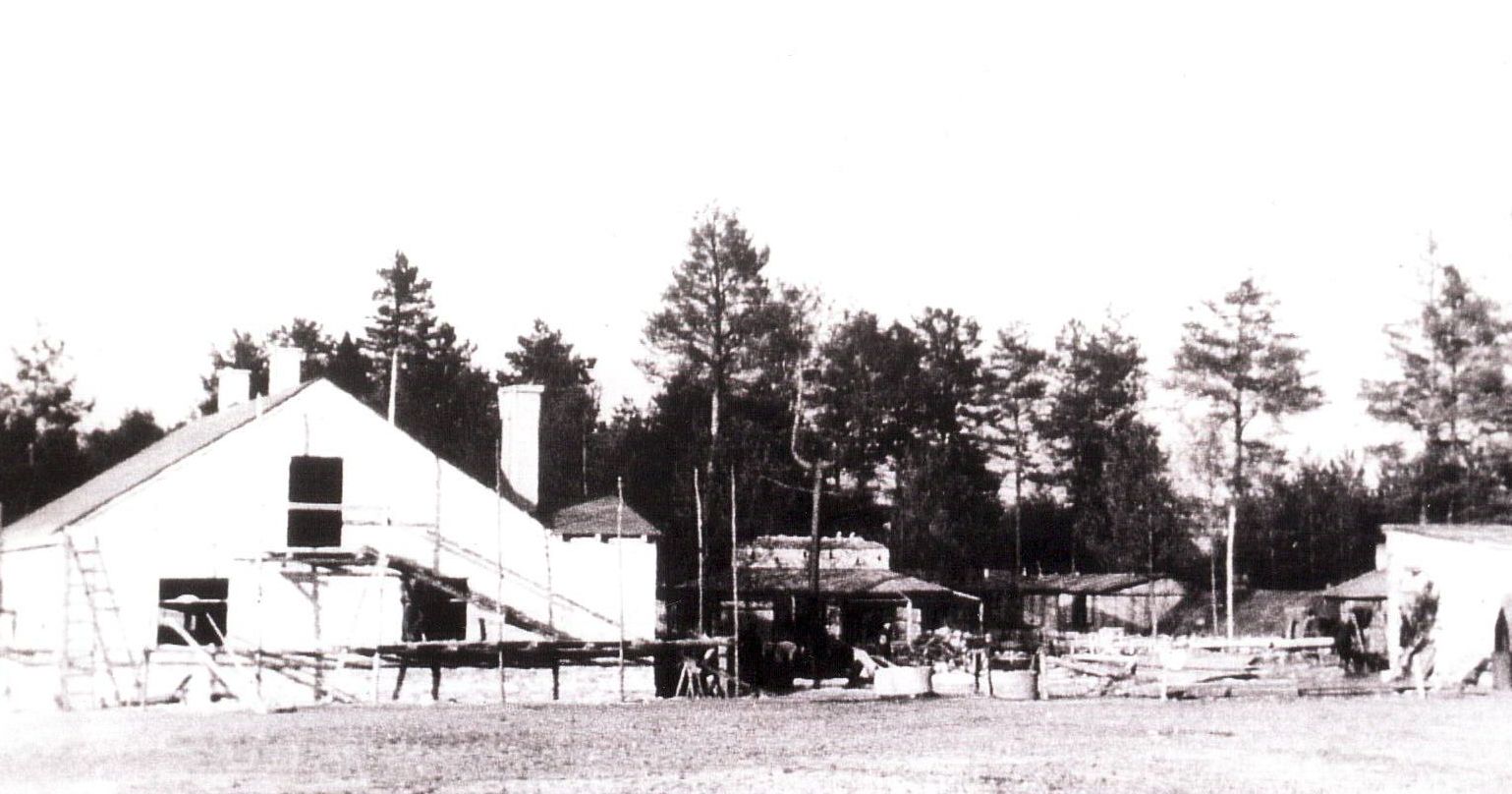Holocaust Education & Archive Research Team |
Aktion Reinhard A-R Leadership
A-R Articles
Action Erntefest Modern Research
| |||||
Jewish Working Kommando’s in the Aktion Reinhard Death Camps
[In order to enhance this text we have included several photographs from Labour camps as well as Aktion Reinhard death camps]
The Nazis realised at an early stage that there was a need for permanent and experienced working groups of prisoners, to ensure that the death camp operations ran smoothly.
Jewish specialists, were able to work on their individuals skills, as long as they were fit and served a purpose, the days of arbitrary executions became a rarity, those who fell ill, were executed.
At Belzec the first operational death camp within the Aktion Reinhard sphere, camp commandant Christian Wirth developed the guidelines for exterminating the Jews, and for supervising the Jewish work brigades.
Anyone who didn’t work was exterminated. At Sobibor Death Camp in May/June 1942. Moshe Bahir, who arrived in Sobibor at that time with a transport of Jews from Zamosc wrote :
To my great good fortune I was part of the second transport, some of whose members were selected as permanent workers. Before that, they would take out 200 men from each transport to load the belongings. As soon as the work was finished, they shot them. I however, was privileged to be counted among the permanent workers of the camp
In charge of each working group was a Capo, who was one of the prisoners. The Capo was responsible for the prisoners work, and the prisoners had to obey his orders. The Capo wore a yellow armband bearing the black letters CAPO, he was armed with a club or a whip.
Larger work teams were sub-divided, and each sub-group was headed by a foreman (Vorarbeiter), who wore his title on a black armband.
An SS man from among the German staff of the camp was in charge of each prisoner work group. In some cases one SS man supervised two or three work groups.
Platform workers ( Bahnhofkommando)
This group of forty to fifty prisoners worked at the train platform. The team’s job was to open the freight cars and transfer the orders of the SS men receiving the transports, to disembark from the trains.
After the deportees disembarked, the team workers removed the bodies of those that had died en route and transferred them to the Lazarett in Treblinka, or into metal carts that ran on rails into the extermination area.
At Belzec a Jewish work brigade carried those that had died on stretchers to a special grave close to the eastern boundary of the camp.
Two or three prisoners would clean each freight car and within ten to fifteen minutes the entire train had been cleaned. In Treblinka the platform workers team wore blue armbands. Oscar Strawczynski wrote about the arrival at Treblinka. "We run out as fast as we can to avoid the whips lashing overhead, and find ourselves on a long, narrow platform, crowded to capacity. All familiar faces—neighbours and acquaintances.
The dust so tremendous, it obscures the sunlight. A smell of charred flesh stifles the breath. Unwittingly, I catch a glimpse of the mountains of clothing, shoes, bedding and all kinds of wares that can be seen over the fence. But there is no time to think.... The dense mass of people is pushed toward and jammed through a gate.
At this I just have one thought—not to lose my dearest ones in all this chaos. I succeed in keeping together my wife, two beautiful children, mother and father. Little do I know that these are our last minutes together, that behind that gate we would be torn apart and we would never see each other again...
In that great tumult I do not notice that the work on the platform, such as clearing the people and leftover luggage from the trains, and herding and pushing the crowd toward the gate, is performed by a detachment of around thirty Jewish men wearing blue armbands. This is the detachment of “Blues” commanded by Kapo1 Mayer. On the platform there are also S.S. men, the Ukrainian “Wachmaner” (Watchmen) of Treblinka."
Thomas Blatt shortly after his arrival in Sobibor, wrote this about the Sobibor Bahnhofkommando:
I heard people singing, and I jumped down and went outside. The gate opened wide, and in marched a group of about twenty robust youths. They wore dark blue overalls and fancy caps, with the letter B embroidered within a yellow triangle. The leader held a whip and issued a sharp command in German: “Abteilung … Halt”.
A few steps forward and the group halted, with the next command, everyone dispersed.
"If I had not heard them speak Yiddish after they broke ranks, I would have mistaken them for German soldiers. Though I had seen them with my own eyes, I still couldn’t believe they were really Jews. I found out later that the B stood for Bahnhofkommando, train brigade."
Transport Square Workers (Transport-kommando)
This group of about forty prisoners was engaged in the activities carried out on the square, where the victims undressed. They directed the victims, relayed the German’s orders to undress, and distributed string for tying shoes together so they could easily be re-used without having to sort through thousands of shoes.
The team workers aided in the undressing of small children and in taking the clothes and baggage left by the victims to the sorting areas or stores. They also carried deportees who were ill or too weak to make their own way to the gas chambers, to the Lazarett, where they were executed by a shot in the back of the head.
In Treblinka the Lazarett was located in the reception area, in Sobibor the Lazarett was located in a former chapel, inside the extermination area, and in Belzec also in the extermination area, by the eastern boundary.
Oscar Strawczynski wrote about the Transport kommando at Treblinka :
"But there, on that sorrowful Transport Square, there is no time for tears or feelings. I scarcely have time to hand my wife the carefully hidden blanket for the children. A brutal hand grips my shoulder and I am hurled to the other side of the Square. I manage to stay with my gentle father. The place is packed with people. On one side are women with small children, on the opposite side, men, forced to kneel. In the middle there are S.S. men, Ukrainians with weapons in their hands as well as a group of about forty men with red armbands. These are Jews—the detachment of “Reds”.
In Treblinka slang they are called “Chevra Kedisha” (Society for Last Rites)."
Kapo Yurek was their leader, a Warsaw rickshaw driver, so corrupt and debauched, no deed was too foul for him. This brute would not hesitate to take aside a girl, already naked, on her march to the “bath”. Promising to save her, he would do the worst, then push her back into the line. He is dressed elegantly, as that type of person could easily afford to be in Treblinka. He works his whip frequently and with gusto on Jewish heads. As foul and corrupt as he was, his language was even worse. The vernacular of the Warsaw underworld was nothing new in Treblinka. There were great artists in that field, but no one could surpass Yurek. In short, he was quite a notable of Treblinka’s aristocracy. Most of the “Reds” were recruited from the Warsaw underworld, and did not fall far short of their Kapo.
The Gold Jews (Goldjuden)
This group comprised of approximately twenty people, most of them former jewellers, watchmakers, and bank clerks. Their task was to receive and sort the money, gold, valuables, foreign currency, and bonds taken from the deported Jews.
Some of this group worked at the undressing area, receiving money and valuables from the victims on their way to the gas chambers. Members of this group had to carry out body searches on the women after they had stripped and before they were taken to the gas chambers. The women had to lie on a special table, where they would be thoroughly searched, including in their genitalia.
One section of this group worked at the square and stores where the belongings left by the victims were sorted and checked. They received the money and valuables and prepared them for shipment from the camp.
These “Gold Jews” were considered extremely privileged, because they could secretly siphon off money and valuables of considerable worth, evening the camp.
On their part the SS personnel needed them to secure their share of the wealth that passed through the camp.
Samuel Willenberg wrote about the Goldjuden at Treblinka:
The prisoners responsible for collecting and sorting the gold, jewellery, money and other valuables which had reached the transport square were known as Goldjuden, and wore yellow shoulder bands to distinguish them. At any one time several of them would wander about the sorting-yard collecting any valuables we had found in the clothing.
Goldjuden were considered the elite of the prisoners, their work was relatively tranquil, they sat in a closed, warm hut under the supervision of SS man Franz Suchomel, a German from the Sudetenland, who spoke good Czech. Suchomel usually assigned Czech Jews to this kommando, who came from Theresienstadt.
Ordinary prisoners were not admitted to the hut where the Goldjuden did their work, the Goldjuden were better dressed, than the other prisoners, going about in elegant coats, colourful scarves and leather gloves. They looked more like bankers than prisoners, especially when carrying the briefcases in which they stored the valuables found in the clothing of people who had just then been murdered.
The Hair Cutters ( Friseurs)
This group comprised those prisoners who cut the hair of the women victims before they entered the gas chambers. They numbered about twenty men, mostly professional barbers.
In Sobibor the barber shop was in a special barrack in the middle of the “tube”, and in Belzec it was in a barrack close to the gas chambers. In Treblinka the hair cutting was carried out in the gas chambers, in the initial stages of the camps existence.
The barbers subsequently worked in the barracks, near the entrance gates to the tube, where the women undressed, this was at the end of the barrack, separated by a partition wall.
Abraham Bomba wrote about the Barbers kommando at Treblinka:
This was about four weeks after I was in Treblinka. It was in the morning around ten o’clock, when a transport came to Treblinka and the women went into the gas chambers.
They chose some people from the working people over there, and they asked who was a barber, who was not a barber. I was a barber for quite a number of years, and some of them knew me – people from Czestochowa and other places. So naturally, they chose me and I selected some more barbers who I knew, and we got together.
We worked inside the gas chamber for about a week or ten days. After that they decided that we will cut their hair in the undressing barrack.
It was not a big room around 12 feet by 12 feet, we were waiting there until the transport came in. Women with children pushed into that place. We the barbers started to cut their hair, and I would say all of them already knew what was going to happen to them. We tried to do the best we could – to be the most human we could.
We cut the hair with scissors and comb, without any clippers. Just like a man’s haircut, I would say. There were no mirrors, there was just benches- no chairs, just benches – where we worked, about sixteen or seventeen barbers, and we had a lot of women in. Every haircut took about two minutes, no more than that, because there were a lot of women to come in and have their haircut.
We were quite a number of us professional barbers, and the way we did it, was with big movements, because we did not want to waste any time.
Thomas Blatt wrote about the barbers kommando at Sobibor:
Our job in this section done, SS Oberscharfuhrer Karl Frenzel randomly chose four prisoners, myself included, and led us to the hair-cutting barrack, less than twenty feet from the gas chambers. Inside were simple wooden chairs, Josef Wolf, a short dark, middle- aged SS man, stood in the centre of the room. I was given large shears and told to wait. The women began to come. I didn’t know what to do.
Just snip quickly in bunches, a comrade told me, it does not need to be close to the head.
I was terribly shy,I had never seen a nude woman before. Like all fifteen year olds, I wanted to, but I felt embarrassed for the naked and humiliated women. I tried not to look directly at them, and they looked down and tried to cover themselves.
Not all the women reacted the same way. One woman resisted, refusing to move. When the Nazi hit her with the whip, she attacked him with her fists and nails, but the German bullet was faster and killed her instantly. Now most were resigned and passive. A teenager wept at the loss of her lovely locks, asking not to have it cut too short.
They were going to die in only a few minutes and there was nothing we could do, after the women left , we packed the hair into potato sacks, which were then taken to a nearby storeroom.
The Sorting Team for Clothing and Belongings (Lumpenkommando)
This was the largest labour team, numbering eighty to one hundred twenty people, and was subdivided into several smaller groups. The team worked in the square, where the victims belongings were piled, and in the storage sheds.
Its main job was to collect the victims clothing and belongings, examine them , sort them by categories, tie them in bundles of ten or twenty five units in each category, prepare them for shipment, and load them on freight cars.
The team workers were given a personal number, which they wore on their collars, and which they had to list on each bundle they prepared.
The clothing was first examined for documents, photographs, hidden money, and valuables and the yellow star or any other mark which could identify the clothing and other items as having belonged to Jews.
All these were to be removed, any sloppiness, regarding not removing all trace of the Jewish marks, the perpetrator paid for this mistake with his life.
A couple of illustrations from Samuel Willenberg and Richard Glazar will demonstrate the work of the sorting kommando;
Like peddlers in a Persian market who trumpet praise of their wares, the foreman Kapos, shouted Work, work, faster. Their roaring reverberated across the vast yard. Like everyone else, I worked at breakneck speed. Anything I touched had to be sorted not only by type of cloth but even by quality. Worthless rags were thrown onto special white sheets, tied into bundles and lugged to open storage areas in the middle of the yard. These white bundles stretched in piles for hundreds of meters, creating eerie avenues of coats, jackets, dresses and other garments.
At a murderous pace, accompanied by the mad cries of the foreman, we worked and sorted all these personal effects. Now and then we found various documents – birth certificates, passports, money, family photos, letters from relatives, diplomas, university degrees, professional certificates, doctors licences.
I sorted glasses knives, spoons, pots and scissors, stuffing them like everyone else into suitcases at my side. Bent double, we worked like madmen. Suddenly, as if by order, the foremen began to scream “Koirem, koirem – a vulgarization of the term from the Hebrew liturgy meaning bend- and everyone began working even more frantically.
We tossed the belongings of murdered Jews into the air, creating an impression of rapid progress.
Late in the afternoon Kuttner bursts into Barracks A like some enormous piece of hot iron slag and has all the sorted bundles counted, thus ascertaining that there is a total of 132 bundles of men shirts, instead of the reported 205. Missing are 73 bundles of men’s shirts, packed ten to a bundle.
There is a small pile of approximately twenty items yet to be sorted. Apart from these there are no shirts in Treblinka, or sports jackets either. With a final clicking of his heels, First Sergeant Kuttner looks up from his journal. The two Supervisors from Barracks A, forward.- “ As a punishment they will be sent to Camp 2 as common labourers.
To the second camp – to the death camp. He’ll be dead to us.
The Forest Team (Waldkommando) and the Camouflage Team(Tarnungskommando)
A special group known as the Waldkommando, which numbered a few dozen prisoners, was set up to cut wood for heating and cooking in the camp. It was put to work in the dense forests that were near the camp.
When the cremation of the corpses started, the team was enlarged, for it had to supply the wood for the bonfires on which the corpses were burned.
In Treblinka a second prisoners group worked outside the camp. It was called the camouflage kommando and numbered approximately twenty five.
Its task was to camouflage with branches the camp’s outer and inner fences, especially the fences around the extermination area and the tube. The team workers would cut branches in the forests and weave them into the barbed-wire fences. Since it was constantly necessary to replace dried-out branches with fresh ones, the camouflage work was continuous.
These groups of prisoners left the camp confines under a strong guard of Germans and Ukrainians.
Thomas Blatt described the Sobibor Waldkommando:
I decided to try the Waldkommando next. The work performed there also took place outside the barbed wires of the camp. This particular group supplied wood for the crematorium by cutting down trees and digging out the stumps. Although this area was heavily guarded, we were out of view of the guards in the towers. Maybe just maybe, there was a chance to escape. I had been looking for an opportunity to merge into the Waldkommando to check the possibilities there.
One morning I asked Foreman Podchelbnik to permit me to join his group. I was accepted. The group was composed of twenty Polish Jews and twenty Dutch Jews. Each morning we went to the forest about three miles outside the camp.
It turned out that we were in fact heavily guarded, one guard for every two prisoners. True we had weapons – axes and saws to cut down trees – but the Ukrainians had a special strategy in guarding us. They stood at a greater distance from the prisoners than usual, their weapons ready at all times.
The work was tortuous, supervised by the SS men Hubert Gomerski and Werner Dubois, Gomerski was particularly known for his cruelty.
On 20 July 1943 there was an attempted escape from the Waldkommando – as described by Thomas Blatt:
Finally , we were ordered to stop and form a semi-circle in the centre of the meadow between Lager II and Lager III. Now I noticed a group of people sitting on the grass with their hands behind their heads.
SS Untersturmfuhrer Johann Niemann made a speech:
“Some prisoners in the Waldkommando tried to escape. Only the Dutch Jews showed their integrity by not trying to run away. As a reward for this, they will be allowed back to work and they will not be punished.
In a moment, the recaptured Polish Jews of the Waldkommando will be executed and this will be the destiny of anyone who even dreams of running away.
A few yards from the condemned stood two Ukrainian assistants who carried out the executions. Two at a time, the prisoners were motioned forward. Apathetically they moved to the appointed place. All spent their last seconds of life looking straight ahead at the pointed rifles.
Of all those sacrificed, only one protested – Podchelbnik, the foreman of the Waldkommando. A second before he was executed, he spat towards the Germans and yelled “Remember, there will come a time, when we will be avenged”.
Groups of prisoners were engaged in construction of barracks, in stringing barbed wire fences, and in paving roads inside the camps.
In the autumn and winter a special potato kommando was established. To prevent the potatoes from spoiling, special cellars were built.
Some prisoners worked in the vegetable garden, pigsty, chicken coop, and cowshed, a few prisoners were employed in cleaning and disinfecting the huts and toilets.
There were also prisoners who supplied direct personal services to the SS and Ukrainians. They included doctors, a dentists and several barbers. A small group of boys was employed to polish and clean the shoes and uniforms of the SS personnel. These boys worked in and around the SS barracks.
In addition there were groups of skilled workers, like tailors, shoemakers, smiths, mechanics, carpenters, and others, known as the Court Jews.
Work Kommando’s in the Death Camp Area (Totenlager)
The Gas Chamber Body – Disposal Team
This group of several dozen men had the job of removing the bodies from the gas chambers and taking them through the rear doors to the concrete ramps built alongside the chambers. There they laid the bodies for removal by the body transport team.
The body-disposal team’s work was the hardest physically and emotionally. After gassing, the hundreds of people packed standing up in the gas chambers became a solid block of bodies. Separating and removing them was extremely difficult.
At times the workers who entered the chambers immediately after they were opened were themselves poisoned by the residue of gas remaining there.
The Gas Chamber and Tube Cleaners
This group cleaned the blood and excrement off the floor and walls of the gas chambers, as the chambers had to be clean before introducing a new group of victims. This group also cleaned the tube and scattered fresh sand on the ground.
The Body Transport Team (Leichenkommando)
This was the largest prisoner work team in the extermination area, comprising some hundred men. Its task was to carry the bodies from the ramps/ platforms of the gas chambers to the mass burial ditches.
After experimenting with various methods of conveying the bodies, in Treblinka the Germans fixed upon stretchers as the fastest way. Two men carried the stretcher, which looked like a ladder with leather carrying straps. The bodies were placed on the stretchers face up to facilitate the work of the Dentisten.
Elihau Rosenberg testified at the Ivan the Terrible trial:
I managed to make a friend of one of the Dentisten by name of Lindwasser, who has since died.
Now when I came to Lindwasser , this Dentisten, he too, was scared to death. I said, Avraham , be a little slower in looking for the gold teeth, because that was one second when I could rest. Somehow I rested the stretcher on my knees, because I was crouching as it were. For me this one second made all the difference. It did give me this tiny bit of respite.
Later he became one of the Bademeisters, the shower cleaners, who washed the chambers and cleaned the ramp between gassings. Sitting there on the ramp, he saw Ivan and Nikolai perform their tasks and heard death come to those inside the chambers.
The Dentists (Dentisten)
The prisoner work team known as the Dentisten was located between the gas chambers and the burial ditches. It numbered about twenty to thirty men whose job was to extract, with pliers, the gold, platinum, and false teeth from the corpses. The dentists also examined the bodies, especially those of the women, for valuables hidden in the body orifices. Part of the team worked at cleaning and sorting the extracted teeth and preparing them for shipment.
The Burial Detail
This group of several dozen men worked at the burial ditches. After the victims bodies were thrown into the pit by the body –transport workers, the corpses were arranged in rows by the burial detail. To save space, the bodies were arranged head to foot, each head lay between the feet of two other corpses, and each pair of feet between two heads. Sand or chlorine was scattered between the layers of bodies.
Approximately half the team worked inside the ditches arranging the corpses, at the same time the other half was covering a layer a bodies with sand.
When a ditch filled up, it was topped off with earth and a new ditch was opened.
During the spring of 1943 the Germans started to burn the corpses as Samuel Willenberg recalled:
Now the SS men procured a tank full of crude oil and lugged it into the Todeslager. A few days later we saw black smoke billowing from the area behind the towering bank between the sorting yard and the Death Camp. The smoke rose hundreds of meters into the air. Germans were continually racing up to the Todeslager, and a large number of Ukrainians than usual guarded us.
Galewski the camp elder knew what was happening:
The Germans, the bastards, are opening the graves, pouring crude oil on the corpses and burning them, but its not working.
After various methods of cremation had been tested, a large grill was erected, known as “Roasts”
Jankiel Wiernek wrote:
Then one day an SS Oberscharfuhrer, Herbert Floss, arrived at the camp and introduced a veritable inferno, he put into operation an excavator which could dig up 3,000 corpses at one time.
A fire grate made of railroad tracks was placed on concrete blocks foundations 100 to 150 meters in length. The workers piled the corpses on the grate and set them on fire.
The burning kommando at the Roasts were known as the burning group ( Feuerkiolonne), they would remove corpses from the stretchers and arrange them in layers on the roast to a height of 2 meters.
Another special kommando known as the ash group (Aschkolonne) had the task of collecting the ash and removing the remains of the charred bones from the grill and placing them on tin sheets. Round wooden sticks were then used to break the bones into small fragments. These were then run through a tightly woven screen made of metal wire.
Rudolf Reder wrote about Belzec
“I belonged to the permanent death crew.
There were five hundred of us all together. Only two hundred and fifty were skilled workers, but of these 200 worked at jobs for which they did not have be specialists – digging graves and dragging corpses.
We dug the pits, the enormous mass graves, and dragged the bodies. Besides doing this work, the skilled workers also had to take part in this.
We dug with shovels and there was also a machine that loaded sand and lifted it above ground level. This machine threw the sand out at the side of the grave. A pile of sand formed, which was used to cover the graves when they were filled with corpses.
About four hundred and fifty people were always occupied with the graves. It took one week to dig one grave.
The most horrible thing for me was that they ordered us to put corpses a meter above the grave that was already full and dump more sand – then thick black blood seeped out of the graves and flooded the whole surface like the sea.
We had to walk across from one edge of the grave to the other, to get to another grave. Our legs sank in the blood of our brothers, we were treading on mounds of corpses – that was the worst, the most horrible thing.
We were watched all the time we worked by a thug named Schmidt, who beat and kicked, if someone was not – in his opinion – working quick enough. He would order him to lie down and give him twenty- five lashes with his whip. He ordered him to count, and if he miscounted he gave him fifty instead of twenty-five.
Fifty was too much for any tormented man to bear – the victim usually dragged himself to the barracks and died the next morning.
This happened several times a day
Also thirty to forty workers were shot each day. The physician usually submitted a list of those who were exhausted, or else the so-called Oberzughuhrers, the main foremen of the prisoners, produced a list of “offenders” so that thirty or forty died each day.
They were led out to a grave at dinnertime and shot.
The roster was also replenished each day, with the same number of people being picked out from the several daily transports.
Aside from digging graves, it was the task of the death crew to pull the corpses out of the chambers, throw them into a high pile and then drag them all the way to the graves. The ground was sandy.
It took two workers to drag one corpse away. We had leather straps with buckles. We put the straps over the arms of the corpses and pulled. The heads often caught in the sand. We were ordered to sling the corpses of small children over our shoulders two at a time and carry them that way.
We left off digging graves when we dragged the corpses. While we were digging graves, we knew that thousands of our brothers were suffocating in the chambers.
We had to work that way from early morning to dusk. Dusk ended the working day, because the “work” was done only by daylight”.
One particular event stood out for Reder;
“Not long before my escape in November a hundred people – already naked by then – had to be picked out from such an overcrowded transport to bury corpses, because the Gestapo calculated that the permanent crew would not keep up with putting so many smothered people into the graves.
They picked only young boys.
All day long they dragged corpses to the graves, beaten, not given a drop of water, naked in the snow and cold.
In the evening the thug Schmidt led them to the edge of the grave and shot them with a Browning. He ran out of ammunition when there were still more than a dozen left, so he killed them one after the other with a pick handle, right to the last one.
I didn’t hear the groans, I only saw how they tried to cut in front of each other in the line for death, helpless shreds of life and youth”.
The Kitchen and Service Workers
A kitchen and a laundry for the prisoners were established in the extermination area, to prevent any contact between the prisoners in the two sections of the camp.
A group of craftsmen was also organised in the extermination area for building and maintenance tasks.
Two to three hundred Jewish prisoners worked in the Totenlager of Treblinka, in Sobibor after the “roasts” were built about one hundred and fifty Jews worked there.
They worked six full days a week, plus a half- day on Sunday – but they were on call any hour, day or night.
Sources
Belzec, Sobibor, Treblinka – by Yitzhak Arad, Indianna University Press Bloomington and Indianapolis 1987 Surviving Treblinka by Samuel Willenberg, Basil Blackwell 1989 Trap with a Green Fence, by Richard Glazar, Evanston, Illinois, Northwestern University Press Sobibor – The Forgotten Revolt – by Thomas (Toivi) Blatt, H.E.P Issaquah 1998 Belzec by Rudolf Reder – Panstwowe Muzeum Oswiecim – Brezinka 1999 Shoah – An Oral History of the Holocaust by Claude Lanzmann – Pantheon Books, New York 1985.
Private Sources / Testimonies
Unpublished memoirs – Oscar Strawczynski
Copyright SJ H.E.A.R.T 2007
|
